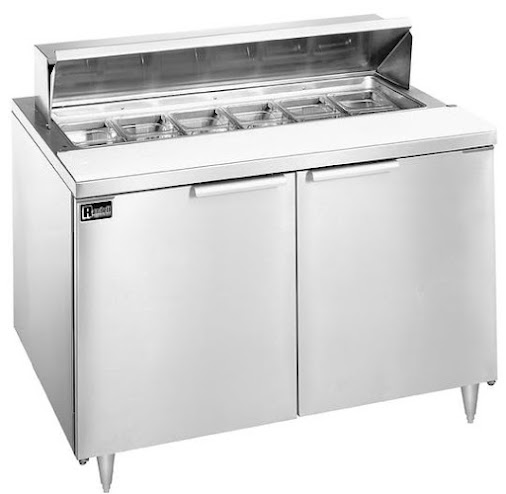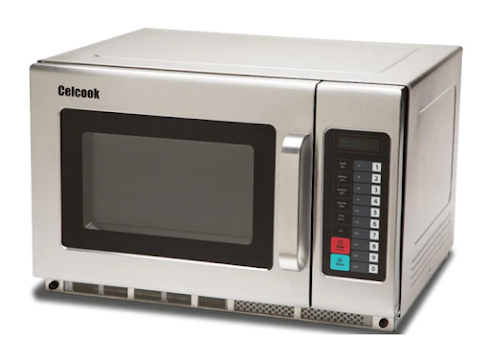Navigating the Ice Landscape: A Comprehensive Guide to Choosing Your Commercial Ice Maker Machine with Celco Canada
Selecting the right commercial ice maker machine is crucial for efficiency and profit. This comprehensive guide from Celco Canada helps Canadian foodservice businesses understand capacity, ice types, condenser options, and maintenance for a perfect fit.
Choosing a commercial ice maker machine can feel like navigating a complex landscape. With various types, capacities, and features available, making the right decision is vital for optimizing your foodservice operation's efficiency and profitability in Canada. A poorly chosen machine can lead to constant shortages, high energy bills, or frequent breakdowns.
At Celco Canada, we’re not just about supplying equipment; we're about providing complete solutions. Our expertise in commercial kitchen and foodservice equipment, coupled with a deep understanding of the Canadian market, positions us to guide you through selecting the ideal ice maker that meets your specific needs. Let's break down the essential factors to consider.
Key Factors When Selecting Your Commercial Ice Maker Machine:
Ice Production Capacity (Lbs/24 Hours): This is perhaps the most critical factor. Estimate your daily ice needs based on your type of establishment and peak hours.
Restaurants/Bars: 1.5 - 3 lbs per seat/customer.
Hotels: 5 lbs per room.
Healthcare: 7 - 10 lbs per patient bed.
Cafes/Quick Service: Lower, but still requiring steady supply.
Always err on the side of slightly overestimating to avoid running out.
Ice Type: The type of ice you produce significantly impacts how it's used and perceived:
Full Cube/Gourmet Cube: Solid, slow-melting, ideal for drinks on the rocks, high-end beverages.
Half-Cube/Crescent Cube: Versatile, fits well in glasses, popular for soft drinks and mixed drinks.
Nugget/Pearl Ice: Soft, chewable, absorbs drink flavor well, popular for specialty beverages, hospitals.
Flake Ice: Soft, moldable, perfect for chilling food displays (e.g., seafood, produce), smoothies, and medical applications.
Machine Style/Configuration:
Undercounter Ice Makers: Compact, self-contained units that fit under a counter, ideal for bars, small cafes, or satellite ice stations. Production typically 50-300 lbs/day.
Modular Ice Makers (Ice Machine Heads): Designed to produce large volumes of ice (hundreds to thousands of pounds per day). These "heads" sit atop separate ice storage bins, offering flexibility to match production with storage needs.
Ice Storage Bins: Essential for modular units, these bins hold the produced ice until needed. Capacity should align with the machine's daily output.
Ice Dispensers: Combine an ice maker head with a dispensing mechanism and storage, common in self-service areas like hotels, cafeterias, and breakrooms.
Condenser Type (Cooling Method): The condenser dissipates heat generated during ice production, impacting energy use, water consumption, and noise:
Air-Cooled (Most Common): Uses ambient air to cool the condenser coils. Generally the least expensive to purchase and install. Requires good airflow around the machine; not ideal for hot, enclosed spaces like cramped kitchens.
Water-Cooled: Uses circulating water to cool the coils. More efficient in hot environments and quieter, but consumes significant amounts of water (and can increase water bills). Best for locations with very high ambient temperatures or poor ventilation.
Remote-Cooled: The condenser is located outdoors or in a different area, away from the ice machine. This significantly reduces heat and noise in the kitchen but involves higher installation costs and complex refrigerant lines.
Water Quality & Filtration: Poor water quality is the leading cause of ice machine issues (scale buildup, cloudy ice, bad taste). Investing in a robust water filtration system is crucial to protect your equipment, ensure clear, hygienic ice, and extend the machine's lifespan.
Energy Efficiency: Look for ENERGY STAR® certified models. These machines are designed to operate more efficiently, reducing electricity and water consumption, which translates to significant long-term savings on utility bills.
Durability & Maintenance: Choose reputable brands known for their reliability and ease of service. Consider features like removable, cleanable air filters and accessible components for routine cleaning and maintenance. A regular maintenance schedule (including descaling and sanitizing) is vital for longevity and hygiene.
Why Choose Celco Canada?
At Celco Canada, we don't just sell commercial ice maker machines; we provide comprehensive solutions. Our team of experts can help you:
Assess Your Needs: Accurately determine the right production capacity and ice type for your operation.
Optimize Your Space: Recommend the ideal machine configuration to fit your kitchen layout.
Select Top Brands: Offer a wide selection from trusted manufacturers like Ice-O-Matic, known for quality and performance.
Ensure Compliance: Guide you on proper installation and maintenance to meet health and safety standards.
Provide After-Sales Support: Back your purchase with reliable parts and service across Canada.
Don't let your ice machine be an afterthought. Partner with Celco Canada to make a smart investment that keeps your business cool, efficient, and profitable for years to come.




Comments
Post a Comment